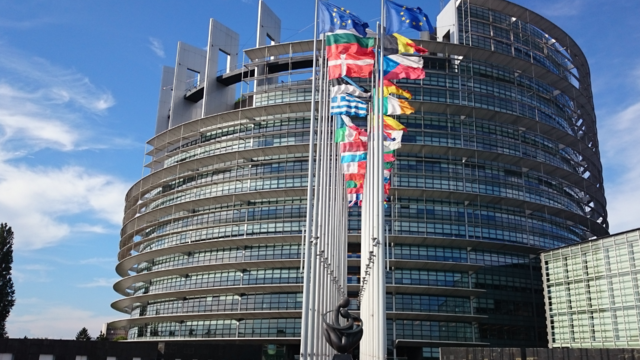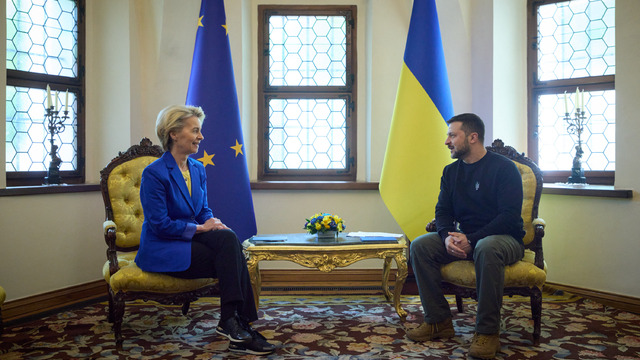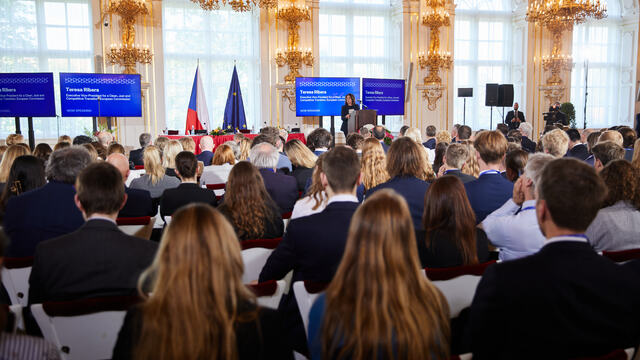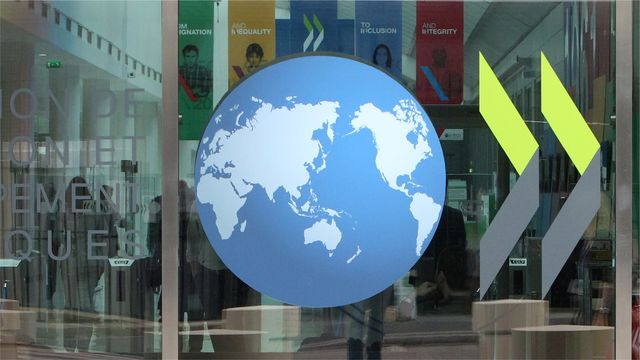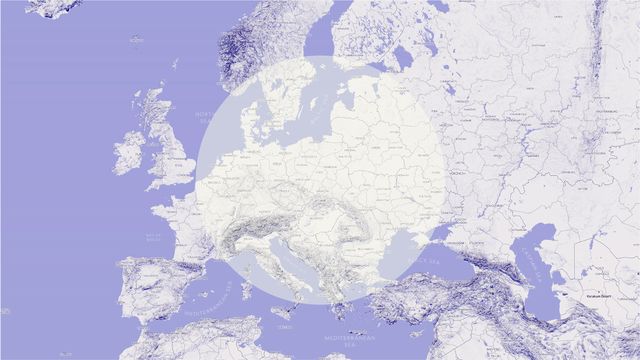A comprehensive EU Strategy for Africa. Development, Humanitarian Aid and Climate Change

The European Commission introduced a new comprehensive EU Strategy for Africa in March. In June, a summary document consisting three briefings was published, one on the topic "Development, Humanitarian Aid and Climate Change′′ was written by our senior researcher Ondřej Horký-Hlucháň. It focuses mainly on EU policy towards sustainable development, climate change or migration.
Abstract
The new EU Strategy for Africa attempts to reflect the continent’s growing relevance within a partnership rather than through a donor-recipient framework. However, this leads to a prioritisation of the formal, productive and technology sectors as well as climate mitigation at the expense of agriculture, informal sector, human development and climate adaptation. With such skewed priorities, this Strategy is ill-adapted for the COVID-19 pandemic and its aftermath. Institutionally, political will is needed to ensure that the continent-to-continent approach is not hampered by parallel, contradictory and fragmenting forces within the African, Caribbean and Pacific Group of States (ACP) and the European Neighbourhood Policy (ENP) governance frameworks. Financially, mutual accountability must be strengthened by joint funding of joint actions. An inclusive institutional mechanism is also needed to promote political and civil society participation as well as policy coherence for sustainable development beyond migration and climate. More generally, the Strategy advances a government-to-government type of partnership at the expense of a more people-centred approach that is more in line with the ‘principled pragmatism’ of the EU.
Introduction
The first trip of Ursula von der Leyen as President of the European Commission to Addis Ababa clearly marked the rising geographical priority of Africa for European institutions and governments. However, it is not less significant that while in her speech she stressed the nickname ‘Geopolitical Commission’ for her College, she did not mention sustainable development or development tout court (Von der Leyen, 2019).
Von der Leyen also put emphasis on the ‘spirit of a true partnership of equals’ with Africa (Von der Leyen, 2019). Again, this is more trend than novelty. When it comes to matters of global development, the donor-recipient relationship was rhetorically replaced by the donor-partner relationship in the mid- 2000s (High Level Forum) and the 2007 Joint Africa-EU Strategy (JEAS) already announced a move towards a ‘real partnership characterised by equality’ (Council of the European Union, 2007, p. 4).
Yet half of the Official Development Assistance (ODA) to Africa is still provided by the European Union as a whole. Sub-Saharan Africa alone receives more EU aid than the rest of Europe and the Middle East combined (OECD, 2020). At around EUR 20 billion a year, this makes the EU’s nominal assistance to Africa the most important single aid flow globally.
In spite of cuts proposed by some member states during negotiations of the Union’s new multi-annual financial framework, overall funding for Africa by the European institutions and member states will probably not decrease in the future. This fact alone, though, does not necessarily contrast with the disappearance of a ‘traditional’ development framing in the joint communication by the Commission and the High Representative ‘Towards a comprehensive Strategy with Africa’ (rather than for Africa, my emphasis) from 9 March 2020 (hereafter Strategy).
From a global, sustainable development perspective, which is the main lens of this briefing, two sets of questions stand out particularly:
- What type of framework replaced the ‘traditional’ donor-recipient perspective in the Strategy and to what extent is it fit to guide financial flows to the continent?
- To what extent are the priorities spelled out in the Strategy coherent with the goals of sustainable development?
The main message in this briefing is that the new Strategy’s pragmatic shift paradoxically revives an outdated understanding of development with the main focus on its economic dimension, combined with the implicit assumption of spill-over and trickle-down to the social dimension in particular. As such, the Strategy’s language seems to reflect the EU’s ‘principled pragmatism’ fully, as set out by the 2016 EU Global Strategy: the values and principles, social and environmental aspects of the partnership with Africa are all there. However, projection of the Commission’s internal priorities for the EU is problematic: from climate change, digital transition and geopolitics, to its external relations with Africa. With the assumption of a ‘true partnership’, the EC obliterates deep inequalities, dependencies and diversity between and within both continents. This leads to side-lining issues emphasised by the African partners and hence once again to one-way agenda-setting that can be charged with hampering the EU-Africa relationship’s previous implementation.
While the ‘EU Strategic objectives’ were already reflected in the 2017 Joint Communication for a renewed impetus of the Africa-EU Partnership (EC,2017), preceding inputs by the Commission and the European External Action Service (EEAS) maintained the objective of developing a people-centered partnership. In the age of rising global populism and authoritarianism, it is most worrying that this goal of responding directly to people’s needs and concerns has entirely disappeared from the new Strategy. This is also in line with the previous Commission’s ‘radicalshift’ towards development of the productive sector by way of public guarantees for and blending with private investments in Africa (EC, 2018, p. 1).
It is on the basis of a comparison with previous strategy documents, the evaluation of their implementation and priorities set previously by the European Parliament and African stakeholders, that this briefing reviews the joint communication ‘Towards a comprehensive Strategy with Africa’ according to the main development issues and policy coherence, mindful of any relevance from the COVID-19 pandemic and its aftermath.
Sustainable development priorities
Prioritisation of certain issues in either bilateral or inter-regional development strategies is a necessary and welcome process as long as those priorities correspond to the donor’s comparative advantage when compared with the partner’s needs. In line with this, the New EU Consensus on Development covers the ‘5P’ clusters of Sustainable Development Goals (people, planet, prosperity, peace and partnership), while emphasising some of the EU’s general priorities for all countries in the South and the European Neighbourhood (youth, gender equality, mobility and migration, sustainable energy and climate change, investment and trade) (Council of the European Union, 2017).
The new EU Strategy for Africa, though, marks a stark departure from many unfulfilled priorities in the Millennium Development Goals (MDGs) that – for this very reason – remained key priorities as the subsequent Sustainable Development Goals (SDGs) within the UN’s 2030 Agenda. The fact that the word ‘poverty’ appears only once in the 19-page Strategy, namely in an introductory reference to the number of people living under the poverty line, is a good illustration of this shift. In contrast, the section covering ‘Key Development Issues: Accelerating Progress towards the MDGs’ corresponds to 10 % of the JEAS’ length.
The implicit attempt at rhetorically destigmatising Africa as an underdeveloped region and instead emphasizing the continent’s opportunities should not be underestimated. This bias may also be due to ‘middle-income’ priorities within the long-term Agenda 2063, acknowledged previously by the EU (European Commission, 2017). Yet Table 1 shows a clear pattern in the Strategy’s peculiar understanding of development.
Table 1: Representation of sustainable development priorities in the Strategy
| Sustainable Goal Development | Priority |
|---|---|
| 1. No Poverty | Low |
| 2. Zero Hunger | Low |
| 3. Good Health and Well-being | Low |
| 4. Quality Education | Medium |
| 5. Gender Equality | Medium |
| 6. Clean Water and Sanitation | Low |
| 7. Affordable and Clean Energy | High |
| 8. Decent Work and Economic Growth | High |
| 9. Industry, Innovation and Infrastructure | High |
| 10. Rduced Inequality | Low |
| 11. Sustainable Cities and Communities | Medium |
| 12. Responsible Consumption and Production | Medium |
| 13. Climate Action | Medium |
| 14. Life Below Water | Low |
| 15. Life on Land | Low |
| 16. Peace and Justice Strong Institutions | High |
| 17. Partnerships to Achieve the Goal | High |
The biggest emphasis is placed on the productive sectors whilst references to human development are not only less frequent, but they are also generally spread throughout the document, often as mere preconditions for economic growth. This is the case with health, well-being and the elderly in particular (EC, 2020, p.10). The focus on youth and women, on the other hand, concurs with the priorities of both MEPs and African partners, but it could stand to be more mainstreamed throughout the Strategy. At the same time, human rights are seen as a precondition for security and development rather than a stand- alone principle (EC, 2020, pp. 11 and 12).
Moreover, disbalances between the relevance of economic sectors versus sustainable development are also present within the productive sector. While agriculture still employs about three in five Africans, with the consequences for food security, smallholder farmers are surprisingly never mentioned in the Strategy. The Informal sector, within which it is estimated that two thirds of Africans are employed, receives only one acknowledgement as being undesirable and ready for transition towards the formal economy (EC, 2020, p. 10). Although small and medium enterprises (SMEs) are mentioned, this is only in relation to ‘space private sector’ (EC,2020,p.5). There is also excessive overrepresentation of digitalisation. While this topic takes up a page and a half, it does not mention its potential benefits for enhancing people-to-people contact as a standalone value, but it is understood merely as a tool, especially for businesses . B u t again, the more general problem of literacy is mentioned only with regard to digital literacy (EC, 2020, p.5).
Also missing in the Strategy are other key topics that have recently been jointly emphasised in the Abidjan Appeal by European and Pan-African parliamentarians. Most importantly, electrification and infrastructure developments are barely covered. This is also the case with industrialisation as well as ‘management and traceability of natural resources, and equitable allocation of revenues’, for example, another ‘elephant in the room’ of the African political economy and ecology with direct consequences on livelihoods (EC, 2020, p. 2). As another example, the Strategy’s only references to urban environment are ‘smart urbanisation’ and ‘green cities’, which overlooks the fact that around half of urban Africans still live in slum conditions.
Overall, analysis of the Strategy’s contents reveals a strong disbalance in that emphasis is being placed on the economic aspects of sustainable development at the expense of social and environmental concerns (with the exception of climate change mitigation). While the Strategy rightly acknowledges the urgent need to create jobs for the young generation of Africans, there is nevertheless a disproportionally marginal focus on existing productive areas such as agriculture, informal trade along with mining and industry that are all characterised by being low value-added, but still crucial in terms of employment an d government income. On this issue, a relatively recent EP resolution from 16 November 2017 on ‘EU-Africa Strategy: a boost for development’ presents a much more balanced view and does not shy away from ‘old-fashioned’ topics such as poverty eradication and sustainable industrialization (EP, 2017, p. 5). Even the initial 2017 EC/EEAS contribution had a more social view of job creation for the African youth.
Security-development nexus
The Strategy has very little to say about humanitarian aid, which still represents about one tenth o f O DA provided to Africa. It is mentioned and repeated only in four normative, almost identical expressions alongside development as well as peace and security interventions, which are all framed by resilience (EC, 2020, pp. 13, 14 and 19). This security-development nexus, also a part of the policy coherence agenda, must be clearly explained beyond a simple promise to take the issue into account during future decisions.
In these times of extreme weather conditions caused by the climate crisis, it is surprising that the issue of cooperation on disaster risk prevention and mitigation is missing entirely, while it was explicitly mentioned in the 13 years old JEAS (Council of the European Union, 2007, p. 16) and reiterated in the New EU Consensus on Development (Council of the European Union, 2017, p. 34).
Climate change adaptation and mitigation
Cooperation on climate change as a topic, by contrast, is well developed in the Strategy – this corresponds to the high political priority given to climate change by the Commission internally. It is a stand-alone topic within the ‘Partnership for green transition and energy access’ and it is also mainstreamed throughout the rest of the paper. The EU’s support or National Energy and Climate Plans (NECPs) of African countries is rightly acknowledged.
However, four issues related to climate change are underdeveloped. Firstly, there is a disbalance between climate change adaptation and mitigation, to the benefit of the latter. Despite recent increases in greenhouse gas (GHG) emissions from Africa, both historic and current African emissions are a relatively minor problem compared with those in the EU as well as other traditional and emerging industrial powers. In contrast, along with Oceania, Africa is probably the continent that will need most investment s in climate crisis adaptation.
Secondly, within climate change mitigation, the issue of GHG emissions is more accentuated than the issue of GHG absorption and retention. While the role of forests in mitigating climate change is indirectly recognised, the risk that losses from ecosystem depletion would outweigh gains in carbon energy efficiency is not tackled at all. This risk may also be increased through increased food production, an issue of policy coherence which is particularly acute in equatorial rainforests.
Thirdly, the focus on particular sources of energy is somewhat random. While the Strategy emphasises Africa’s potential for hydrogen production and warns against further development of coal power generation, it is silent about transitional sources such as natural gas. Despite the high potential for export to Europe from North Africa, solar energy is also surprisingly absent. In line with this, the social issue of energy accessibility as an integral part of SDG 6 ‘Affordable and clean energy’ is also entirely missing.
Finally, the issue of cooperation in climate diplomacy is treated more as a fact of the past than a commitment for the future, directly in line with ‘Proposed Action 10 – Partner with Africa to strengthen the international rules-based order and the multilateral system, with the UN at its core’ (EC,2020, p. 17). With this last exception where the EU’s interests are not emphasized enough, in general terms the prism of the EU’s immediate business interests again leads to a mismatch between issues that are not only important for Africa, but also eventually for Europe. This is specifically the case with climate adaptation and its link to environmental migration, for example.
Migration and development
Comparing the 2020 EC/HR Strategy with the 2007 Joint Africa-EU Strategy (JEAS) – which by its very nature reflected better African priorities – signals a very slight withdrawal of the Migration and Development agenda (it had a separate chapter in JEAS [pp.15-16]). Most importantly, the current Strategy does not mention the continuing problems resulting from the ‘brain-draining’ of health and education professionals from Africa to Europe. Migration is not (rightly) seen as a positive phenomenon in essence, but only as something potentially positive under the condition of effective management (as far as migration can be managed).
As compared with the period preceding the 2015-16 European migration crisis, more emphasis is put on return and re-admission policies, but the overall treatment of migration is very balanced and general, with the necessary human rights together with humanitarian and international law safeguards.
In relation to the migration-development nexus, two issues arise. Firstly, there is nothing about the potential migration-related conditionality of EU aid provision, even in a ‘more for more’ mode (see also Part 7). Secondly, the document seems to propose an upgrade of the project-based Migration and Mobility Dialogue in a ‘joint framework’ and it re-emphasises the existing political processes (EC, 2020, p. 16), yet it remains vague on the preference of multilateral and bilateral arrangements with complementarity and added value as the sole guidance.
Overall, while generally keeping the language agreed for the Migration and Development agenda, the Strategy is (probably intentionally) vague, which raises questions about use of the migration issue as a bargaining chip with African countries and what the EU can really offer in terms of facilitating legal migration and people-to-people contacts for Africans. In this regard, the absence of Erasmus+ as a flagship programme for EU internal integration is striking in spite of the previous launch of African ‘Erasmus’ (EC, 2018, p. 7).
Institutional compatibility and funding
It was rightly emphasised that there is a tension between the ‘desire for European leadership on multilateralism’ and ‘linkages between internal and external policy across all portfolios’ (ECPDM, 2019, p. 2). This has led to the present paradox where a positive appreciation of the African Union (AU)-EU- United Nations (UN) alliance coexists with a negative selectivity from the sustainable development agenda in EU-Africa relations. This relates, though, more to the funding priorities in regard to diverse development issues than to the whole institutional framework.
Much has also been written and said about competing frameworks within the strengthening EU-AU continent-to-continent approach versus the outdated post-colonial EU-former colonies EU-ACP format. Furthermore, following Brexit the related problem of ‘budgetising’ the European Development Fund (EDF) into the Neighbourhood, Development and International Cooperation Instrument (NDICI) has yet to be resolved. The Strategy claims only that ‘coherence will be ensured’ between AU-EU and ACP-EU formats by ‘building on the existing governance structures’ (p. 17), which is (i) easier said than done and (ii) still extremely vague in a situation where trade and development relations with North African countries are governed through the European Neighbourhood Policy (ENP) and the inter-governmental Union for the Mediterranean. Proposed sub-regionalisation of the post-Cotonou agreement does not resolve these contradictions.
From a development perspective, four points can be made in relation to the European Parliament’s role. Firstly, continuing the current AU-ACP coexistence is harmful to the sustainable development agenda. The ‘short-term governmental gains or vested interests’ of some African countries (Medinilla, A. and Teevan,2020,p.21) as well as the institutional path-dependence of the European institutions limit the political will to abandon, once and for all, the post-colonial ACP format, which is becoming even more outdated given the large majority of EU member states without direct colonial experience. It is exactly this coexistence of two parallel structures that enables the pragmatic and more or less equal inter-governmental EU-AU relations at political level to be simultaneously accompaniedby MDG-like, donor-recipient depoliticised relations at implementation level. If conservation of the legal, inter-governmental EU-ACP framework was inevitable, at least ‘budgetisation’ of EFD into NDICI would be a minimum requirement for increasing coordination and coherence of procedures and flows to Africa as a whole.
Secondly, and related, the European Parliament has repeatedly acknowledged positive and highly appreciated experience within the ACP-EU Joint Parliamentary Assembly (JPA) to increase the democratic legitimacy of the partnership (e.g. EP, 2019). However, ways should be found to strengthen democratic scrutiny beyond the EU-ACP format and extend it into the continental framework. Inclusion of North African parliamentarians and upgrade of the JPA’s mandate to EU-AU format is highly desirable. If not viable, joint sessions of ACP-EUJPA and the Parliamentary Assembly-Union for the Mediterranean (PA-UfM) could provide a partial remedy to the missing democratic base of pan-continental parliamentarism. It is characteristic that the Strategy does not even mention parliaments as a legitimate part of the AU-EU governance structure, but only as a part of civil society (EC, 2020, p.17). Yet, as this analysis concludes, ‘consolidating the political dialogue between the EU and Africa to ensure a people-focused partnership’ is indeed a crucial element to mitigate the disbalances within the Commission’s current approach to EU-Africa relations (EP, p. 7, my emphasis).
Thirdly, in terms of funding, it is not surprising that this investment-oriented Strategy sees the NDICI mainly as a tool for leveraging private capital through guarantees and blending (EC, 2020, p. 8). There can never be joint action and equal cooperation with mutual accountability without joint financing. African countries are starting to mobilise domestic resources for their Pan-African Programme (PANAF) to fund the African Union; meanwhile, the NEPAD Agency recently transformed itself into the African Union Development Agency (AUDA). Similar structures are non-existent in the EU-ACP framework.
Fourthly and finally, other bilateral sources of finance on the EU and AU sides are also absent. The incapacity of EU member states tokeep their promises in increasing ODA has led to a complete silence about their financial commitments. In comparison, the JEA Seven promised to earmark their 50 % ODA increase to Africa. On the African side, quite unexpectedly and unlike repeated reference in the preceding paper (EC,2017, p. 9-11), the new Strategy mentions the important issue of cooperation on mobilisation of domestic resources through taxation only indirectly from anillicit financial flow perspective (EC, 2020, p. 10). The time of debt cancellation is over and ‘debt management’ is again mentioned as an internal good governance issue for African countries from a neoliberal perspective (EC, 2020, p. 10).
Overall, it could seem that the unresolved coexistence of the ACP-EU and AU frameworks may create a complementarity between the pragmatic and people-centred approaches, respectively. In reality, though, the division of labour between policies on the one side and the main source of finance to implement them on the other side, creates tensions that paralyse the future of EU-AU relations, mainly by impeding joint actions with joint funding.
Policy coherence for sustainable development
With only limited public and private funding to implement the SDGs within a short ten year period from 2020, progress on strengthening policy coherence for sustainable development has been recognised as a stand-alone Sustainable Development Target (SDT) 17.14 and an indivisible part of the sustainable development agenda at many levels. Regarding the difference in various recent documents advanced by the European Commission, there are few explicit references to coherence. Most closely to the meaning of Policy Coherence for Sustainable Development (PCSD) is the following ‘blurry’ declaration:
Corresponding to the ‘policy first’ principle, the EU should deploy its instruments in full alignment with EU external policy objectives, standards and rules, and in coherence with internal policies (EC, 2020, p. 18).
This is in stark contrast to the 2007 JAES where coherence is referred to 14 times, with explicit commitments to treaty-based Policy Coherence for Development (PCD) in the areas of food security and fisheries (EC, 2020, pp. 16 and 17). In reality, this relevance gap is even wider since PCD. The internal-external coherence, or consideration of trans-boundary effects, is only one PCSD dimension. The other dimensions like the coherence of the three economic, social and environmental components of sustainable development, the inclusion of non-state actors in implementation and the vertical governance from multi-lateral to local level (OECD, 2018) are not tackled.
Unfortunately, European institutions seem to consider the issue of coherence as being purely to do with development. This is apparent from the differences between their 2017 documents. While the New EU consensus on Development has a separate subchapter that emphasises the complementarity of PCD and PCSD and reaffirms the commitment to Policy Coherence for Development (PCD) (Council of the European Union, 2017, p. 50), it is entirely absent in the parallel input for EU-Africa relations (EC, 2017). The predominance of an EEAS perspective over a development perspective in the new Strategy is apparent.
PCSD also includes coherence between the economic, social and environmental dimensions of sustainable development. This analysis has shown that there is a strong imbalance between economic, social and environmental dimensions of sustainable development in favour of economic issues. To add another example, ‘inclusive social protection systems, universal health coverage, access to quality health service’are primarily linked to a ‘healthy work force’ (EC, 2020, p.11) and ‘basic healthcare’ is linked only to investments (EC, 2020, p. 11).
Moreover, commitments to coherence with EU policies that are not part of the 2030 Agenda, such as the human rights policy, are equally unclear. The Strategy vaguely commits to ‘integrating good governance, democracy, human rights, the rule of law and gender equality in action and cooperation’ (EC, 2020, p. 13), yet lacks clarity in regard to the EP’s ‘strictrespect’ of values and principles in aid conditionality (EP, p. 7) as well as the rebuttal of conditionality in ‘migration matters’ (EC, 2020, p. 14). For example, the JEAS explicitly ‘trickled down’ governance issues as far as making them part of EDF programming (Council of the European Union, 2007, p. 90). It can be said that the only issues with good mainstreaming of policy coherence are those of Migration and Development along with (not surprisingly) green transition.
Trade and investment issues, by contrast, are seen as unproblematic while predictive models show that African countries have little to earn in terms of development from the liberalisation of their trade relations with the EU. Nothing could be further from the truth (Trösteretal.,2019). Coherence between the three sustainable developments is simply assumed by claiming the EU’s support to ‘environmentally, socially and financially sustainable investments that are resilient to the impacts of climate change’ (EC, 2020, p 19). While the support to African Continental Free Trade Agreement (AfCFTA) is acknowledged, no mention is made of support for developing regulative frameworks, one of the EU’s comparative advantages, to limit a ‘race to the bottom’ particularly in social and environmental areas.
A last note relates to the institutional framework of PCSD that should also be reflected in the Strategy. The PCD evaluation commissioned by the European Commission (Núñez-Borja, 2018) has shown, inter alia, that possibly the only tangible impacts of implementing policy coherence concerned adjustment of the EU’s fisheries policy to support the livelihoods of Mauritanian fishers. The report conceded, though, that this change in the EU’s policy was rather due to objections from the Mauritanian government than the EU’s allegiance to PCD. This example emphasises the importance of going beyond verbal commitment to policy coherence by setting up an explicit framework for evidence-based political and policy discussions with direct participation on an equal footing of the partners and stakeholders concerned.
Relevance for post-COVID-19 pandemic
Challenges resulting from the current COVID-19 outbreak will be a good test of the Strategy’s relevance for now and for the future. In fact, there is no particular need to mainstream the pandemic’s relevance throughout the paper because the Strategy’s shortcomings in terms of tackling human development a r e only being exacerbated by the COVID-19 crisis. While health is largely missing in the Strategy, the addition of a partnership with Africa on health is not a solution to check the COVID-19 box. From a long-term perspective, other dimensions of human development such as nutrition, education and gender equality are not less interlinked with health and they must be elaborated on equally. On a more positive note, it needs to be acknowledged that the Strategy has learnt lessons from Ebola, in explicitly mentioning the issue of mitigating disease outbreaks by emphasising related ex-ante capacity and infrastructure development (EC, 2020, p. 9). Physical distancing has also increased the relevance of digitalisation, although the problem of affordable access to digital infrastructure is downplayed.
Otherwise, measures to tame the pandemic as well as the disease itself are most likely to affect very large African populations. However, particularly mindful of the malnourished, informal workers, slum-dwellers, pupils and students, elderly people, the chronically ill from both infectious and lifestyle diseases, their problems are not tackled at all by this Strategy. The lack of commitment to humanitarian aid, in other words general ex-post responses to humanitarian crises, also applies to the COVID-19 pandemic. While the Ebola outbreak led to better preparation for health crises in many countries, the current pandemic has also shown the importance of universal health coverage and robust health infrastructure globally, issues that remain at best marginal in a Strategy for a continent with the most vulnerable country systems.
Since this Strategy overlooks the structural conditions of economic inequalities such as state capacity, tax issues and public debt, the EU’s immediate responses to an expected economics low down can only be short-lived. While the Strategy rightly slides towards investment-led approaches, the explicit lack of underlying financial commitment from the EU will now be much more relevant than during the previously expected period of economic growth. Moreover, even without this current pandemic, the Strategy has not learnt from the 2011 global food crisis, by not addressing adequately the issues of food security and the role of local agricultural production in Africa. Finally, it is still too early to estimate the pandemic’s long-term effect on the rate of (de)globalisation. In any case, the Strategy’s top-down and trickle-down economic approach is at odds with supporting nation-led, localised and grassroots development, industrialisation and solutions for Africans.
Conclusions and recommendations
The joint communication by the Commission and the High Representative ‘Towards a comprehensive Strategy with Africa’ sees Africa as the strongest ally in regard to the EU’s interests. There is a belief that European interests are best served in a global rule-based political and economic order, in cooperation with the United Nations. At first sight, it seems that this geopolitical vision would be beneficial to the sustainable development agenda, the flagship of current multilateralism alongside the global framework to tackle climate change.
However, the rhetorical shift towards de iure equality with Africa has come at a price. It has shielded from sight de facto inequalities between both continents and diversity within Africa, as if the continent were composed only of middle- and higher middle-income countries. It has assumed that the EU’s own priorities for Africa are relevant, without paying much attention to the impacts that these policies may have. Promoting digitalization rather than sustainable agriculture may very well lead to an increase of inequalities in Africa – it is not surprising that inequalities and SDG 10 are absent from the core text of the Strategy: the Commission’s emphasis on trade and investments assumes trickle-down effects, which is far from the SDGs promise to ‘leave no one behind’.
In other words, the Strategy reads like something for the African governments rather than African people at large. While the focus on creating jobs for the African youth is laudable, development in terms of digital skills and higher education is still more directed towards the middle classes, without concrete recipes to make African growth inclusive. In combination with competing institutional EU-AU and ACP frameworks, there is a clear tension between the pragmatic BRICS-style government-to-government approach and the 2000’s MDG-style ‘normative power Europe’.
This institutional lock-in does not make it easy for the EU’s ‘principled pragmatism’ to take real shape, not that the EU identified in the Strategy is replaceable with any other traditional or emerging power. However, its values and principles now seem to be reduced to a ‘do not harm’ approach. The ‘Southernisation of aid’ is a global trend (Mawdsley,2018). But the joint communication ‘Towards a comprehensive Strategy with Africa’ threw out the baby of the EU’s people-centred approach and identity with the bathwater of a hierarchical global development framework.
Return of the people-centred approach is a condition for restoring a positive formulation of the EU-Africa partnership simply because it is a real shared concern on both continents. While there is an ongoing call by Africans for the accountability of their governments, the EU is itself being criticized for a ‘democratic deficit’ and the track record of the partnership in terms of promoting political and civil society participation, is bleak 3. This goes hand in hand with proposing a setup of new and specific institutional mechanisms, including policy coherence, to increase participation from the EU and at EU level through the member states down to European and African citizens to reflect on their common priorities and divergences in the relationship4.
The European Parliament now has the opportunity of rebalancing priorities from the joint communication ‘Towards a comprehensive Strategy with Africa’ as follows:
- In terms of partnership, develop new and/or renewed institutional mechanisms for an increased participation from continental to subnational level in the partnership. While the past positive EU- ACP parliamentary experience must be enhanced to EU-AU level, mechanisms to include civil society must be equally formulated and protected.
- In terms of the development model, balance economic development primarily with its social aspects, and private sector development with public sector capacity building. Human development at large, the provision and resilience of public health services, the agricultural sector, physical infrastructure and energy affordability must be covered by the new Strategy.
- In terms of humanitarian aid, elaborate on the security-development nexus as well as disaster risk management and mitigation. The COVID-19 pandemic has uncovered the problem of resilience and the crucial role of the states’ preparedness for crisis in Europe and Africa alike.
- In terms of the climate change policy, emphasise adaptation policies alongside mitigation policies. Put social benefits of fossil energy in perspective with the low African GHG emissions and elaborate on the protection of natural habitats for retaining carbon dioxide in biomass.
- In terms of the institutional framework, subordinate any follow-up to post-Cotonou agreement to the continent-to-continent approach, including the inter-parliamentarian dimension. If parallel ACP- and ENP/UfM-based legal structures remain, make sure that EDF is ‘budgetised’ into NDICI and that EU implementation procedures towards African countries converge.
- In terms of funding, give preference to joint financing and renew support for the African partners to mobilise national and international resources, through better taxation particularly. In spite of unequal capacities, mutual accountability cannot be ensured otherwise.
- In terms of policy coherence, propose an inclusive institutional mechanism for PCSD and mainstream coherence beyond migration and climate. Focus on youth and gender equality also needs to be mainstreamed through the document.
- In terms of timing, the current COVID-19 pandemic and its expected impacts serve only to underline the Strategy’s need to emphasise people-centred solutions for Africa. Trickle-down effects of globalisation do not work with economic growth and increasingly so without it.

